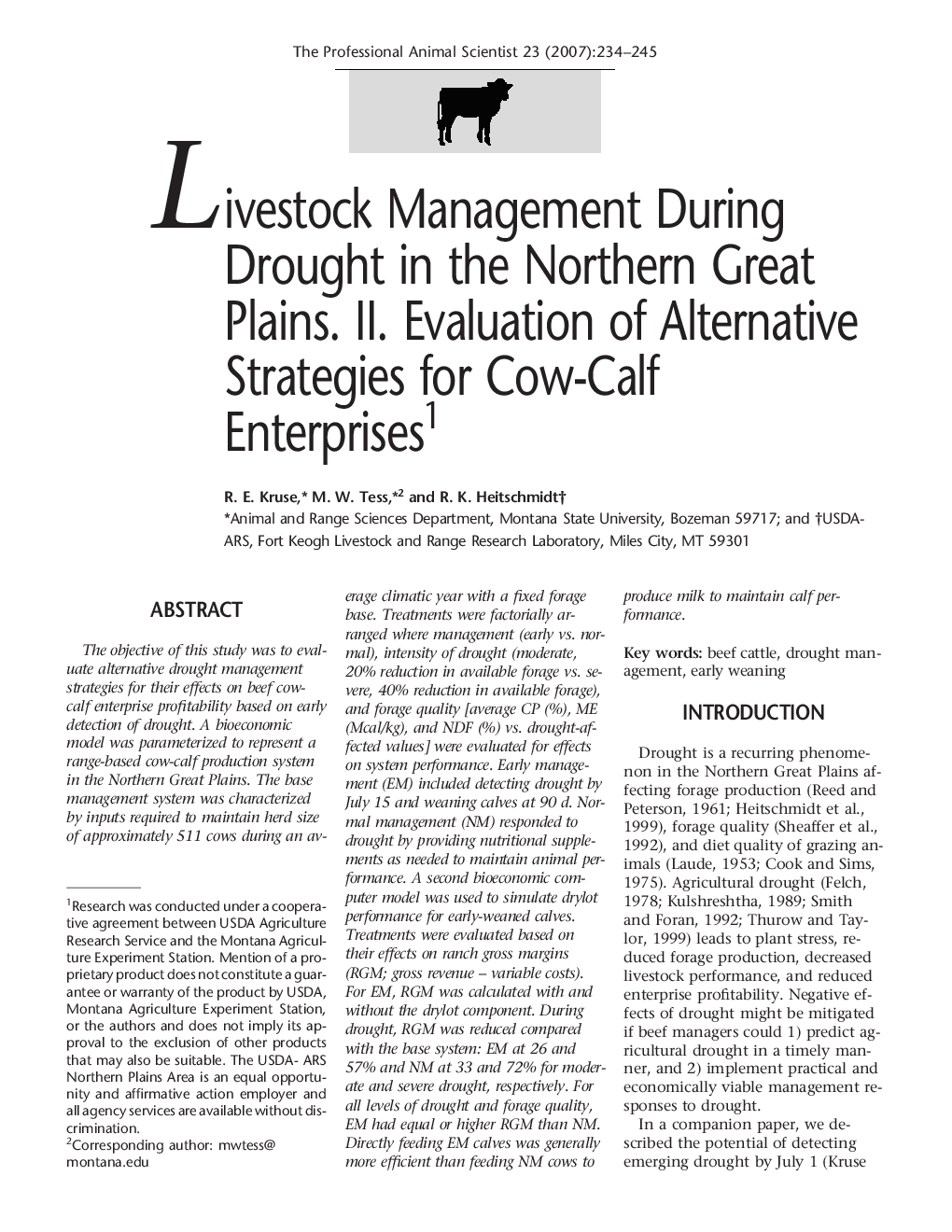| Article ID | Journal | Published Year | Pages | File Type |
|---|---|---|---|---|
| 2454284 | The Professional Animal Scientist | 2007 | 12 Pages |
Abstract
The objective of this study was to evaluate alternative drought management strategies for their effects on beef cowcalf enterprise profitability based on early detection of drought. A bioeconomic model was parameterized to represent a range-based cow-calf production system in the Northern Great Plains. The base management system was characterized by inputs required to maintain herd size of approximately 511 cows during an average climatic year with a fixed forage base. Treatments were factorially arranged where management (early vs. normal), intensity of drought (moderate, 20% reduction in available forage vs. severe, 40% reduction in available forage), and forage quality [average CP (%), ME (Mcal/kg), and NDF (%) vs. drought-affected values] were evaluated for effects on system performance. Early management (EM) included detecting drought by July 15 and weaning calves at 90 d. Normal management (NM) responded to drought by providing nutritional supplements as needed to maintain animal performance. A second bioeconomic computer model was used to simulate drylot performance for early-weaned calves. Treatments were evaluated based on their effects on ranch gross margins (RGM; gross revenue - variable costs). For EM, RGM was calculated with and without the drylot component. During drought, RGM was reduced compared with the base system: EM at 26 and 57% and NM at 33 and 72% for moderate and severe drought, respectively. For all levels of drought and forage quality, EM had equal or higher RGM than NM. Directly feeding EM calves was generally more efficient than feeding NM cows to produce milk to maintain calf performance.
Related Topics
Life Sciences
Agricultural and Biological Sciences
Animal Science and Zoology
Authors
R.E. Kruse, M.W. Tess, R.K. Heitschmidt,
